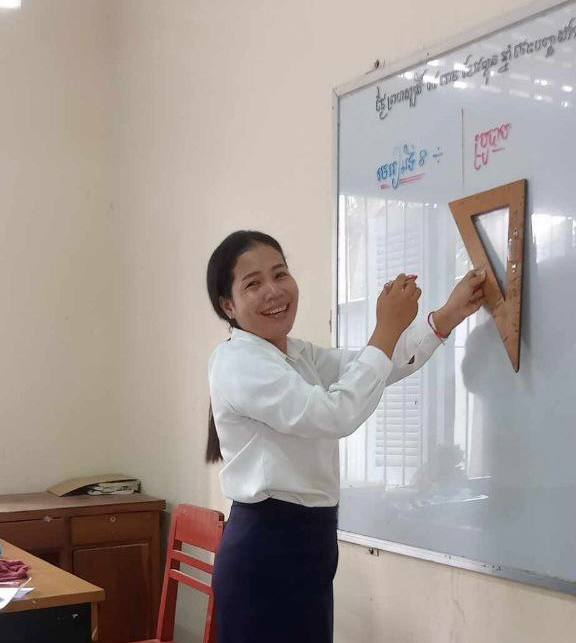The EMCAST STTC CPD provided an offline training seminar for teachers from Kampong Speu town and Samrong Tong district, Kampong Speu province. In one section of the seminar, we focused on Mastery learning and applied the Flipped learning model. During the small group discussions, teachers were very active in exploring the following questions: “What is Flipped Learning? What is the teacher’s role? And What is the student’s role?” After the group discussions,

they gathered a lot of information and tried to brainstorm ideas for a Competency-Based Learning(CBL) Flipped teaching model. During the group presentations, they highlighted the advantages and challenges of using the Flipped learning model.
- Advantages
Students read or watch videos before class, which encourages them to think and get ideas prior to the class. During the class, the teacher facilitates the student’s learning. This approach makes the classroom more active and can improve student achievement standards compared to traditional learning. Although Flipped Learning offers many advantages, it still has some challenges.
- Challenges
In the same situation, students’ learning styles in Cambodia are similar. Teachers cannot successfully apply this model in real classes, because of several factors:
- Students don’t have mobile phones and Internet access.
- Teachers may lack the ability to teach effectively using this model.
- Parents and the community don’t support this model.
- Classroom materials do not support student-centered learning.
When teachers try to apply the new methodology alone, they can fail because they lack support from school principals, parents, the community, and students. Without this support, teachers lose the passion to implement the CBL Flipped learning model.

Ms. Horn Sinara, a Mathematics teacher at Wat Knong Secondary School in Phnom Penh, said;
“I am trying to apply CBL Flipped Learning with a small number of students who are active in learning first”
She tried to explain to the students the benefits of watching the video before class. She tested this approach with two ninth-grade classes. Because some students cannot use their mobile phones, she published the concept video on her YouTube channel and then shared the link in the student Telegram Group. She didn’t expect the students to engage with this teaching method because she was aware of the issues from other teachers. However, she was surprised to see the views on her concept video on YouTube. Eighty percent of the students watched her video and completed the homework before class.
It’s important to know that if we try to do something new and succeed only 1% of the time, that’s okay. Please keep doing it. As you keep trying, your results will improve day by day. Teachers have the power to motivate students to use mobile phones in the right ways to learn and search for information in their daily lives. 21st-century students should be better at using technology to find information and solve problems provided by their teachers.